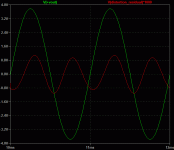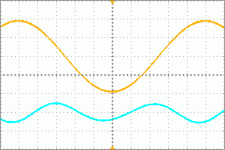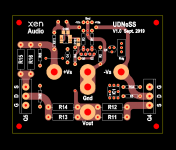There is quite a bit of excitement recently about the unobtanium Semisouth SJEP120R100 power JFETs
that Nelson Pass uses in his First Watt products, such as the mysterious J2.
So much so, that the prices on ebay went up by 67% in one weekend.
If only as an attempt to provide an alternative, I promised to post something similar but without any unobtaniums.
https://www.diyaudio.com/forums/pass-labs/342850-sjep120r100-ebay-real.html#post5922830
(Post #22)
So here you are. I am quite surprised myself that it came out so well, even if only in simulation.
Happy reading,
Patrick
.
that Nelson Pass uses in his First Watt products, such as the mysterious J2.
So much so, that the prices on ebay went up by 67% in one weekend.
If only as an attempt to provide an alternative, I promised to post something similar but without any unobtaniums.
https://www.diyaudio.com/forums/pass-labs/342850-sjep120r100-ebay-real.html#post5922830
(Post #22)
So here you are. I am quite surprised myself that it came out so well, even if only in simulation.
Happy reading,
Patrick
.
Attachments
Last edited:
Even if you have Semisouth's, I think this is still a very good exercise before an SJJ.
I'll publish Gerber files for the UDNeSS perhaps in a week.
35µm double sided, within 10x10cm.
Same as the SJJ published at the Pass forum.
I'll let you figure out how to hard wire parallel FETs by P2P for the ProUDNeSS.
I have not built. We don't have US FETs in stock.
So be warned.
Patrick
I'll publish Gerber files for the UDNeSS perhaps in a week.
35µm double sided, within 10x10cm.
Same as the SJJ published at the Pass forum.
I'll let you figure out how to hard wire parallel FETs by P2P for the ProUDNeSS.
I have not built. We don't have US FETs in stock.
So be warned.
Patrick
As to the phase of the second harmonics, I quote Nelson in his article :
http://www.firstwatt.com/pdf/art_h2.pdf
"So why is the phase important?
Well, it's a subtle thing. I don't suppose everyone can hear it, and fewer particularly care,
but from listening tests we learn that there is a tendency to interpret negative phase 2nd as giving a deeper soundstage
and improved localization than otherwise.
Positive phase seems to put the instruments and vocals closer and a little more in-your-face with enhanced detail.
Your results may vary .....
Roughly speaking, listeners tended to prefer about 1% negative phase 2nd harmonic...."
By sheer chance, the H2 of the UDNeSS is negative phase.
Patrick
http://www.firstwatt.com/pdf/art_h2.pdf
"So why is the phase important?
Well, it's a subtle thing. I don't suppose everyone can hear it, and fewer particularly care,
but from listening tests we learn that there is a tendency to interpret negative phase 2nd as giving a deeper soundstage
and improved localization than otherwise.
Positive phase seems to put the instruments and vocals closer and a little more in-your-face with enhanced detail.
Your results may vary .....
Roughly speaking, listeners tended to prefer about 1% negative phase 2nd harmonic...."
By sheer chance, the H2 of the UDNeSS is negative phase.
Patrick
My sim indicates otherwise, please reconfirm. Ltspice seems to show inconsistent sign on phase of H2, correct on inverting circuit but shifted 180 on non inverting. I used Distortion_residual.asc from https://www.diyaudio.com/forums/software-tools/101810-spice-simulation-37.html#post133313 thread post #361 attachment.... By sheer chance, the H2 of the UDNeSS is negative phase...
Attachments
~180 compared to J2 residual.
Please observe the alignment negative peaks of residual compared to both positive and negative peaks of the fundamental.Nelson Pass in Art_H2.pdf said:The red fundamental goes up and down at a 1 KHz rate, and we see that the blue wave goes up and down as well at twice the frequency, but aligned with the red wave in a particular way - the blue goes down when the red goes up and the blue also goes down when the red goes down. I refer to this as negative phase 2nd harmonic. Positive phase 2nd harmonic is the opposite.
Attachments
Last edited:
I am pleased to say that someone (I trust) has agreed to be Alpha tester.
So he will get the prototype built and tested first.
Any necessary changes will then be implemented before releasing the Gerber files to the public.
It will thus take a little longer.
Hopefully before Christmas,
Patrick
So he will get the prototype built and tested first.
Any necessary changes will then be implemented before releasing the Gerber files to the public.
It will thus take a little longer.
Hopefully before Christmas,
Patrick
I am quite surprised myself that it came out so well, even if only in simulation.
Thanks for this, very interesting!
I have zero experience with SPICE, but I keep reading that SPICE simulations are not very reliable for predicting harmonic distortion. I guess the only way to really know if the harmonic distortion levels from the IRFP parts work out as nice as with the Semi South parts is to actually build the amp with both parts and then compare their measured performance.
What do you think?
FET Matching
People asked about matching.
For best results, you always want to match.
Especially important for Q2,3.
Q1 is not important, as it is only current source and you can trim with Rdg.
Q4, 5 do not have to be matched to each other.
But if you want identical channels, you should match Q5 between channels.
Same for Q4.
Here are some simple matching circuits.
Note that rail voltage is limited by the opamp, as well as some other components in the opamp.
It is also limited by power device dissipation.
Patrick
.
People asked about matching.
For best results, you always want to match.
Especially important for Q2,3.
Q1 is not important, as it is only current source and you can trim with Rdg.
Q4, 5 do not have to be matched to each other.
But if you want identical channels, you should match Q5 between channels.
Same for Q4.
Here are some simple matching circuits.
Note that rail voltage is limited by the opamp, as well as some other components in the opamp.
It is also limited by power device dissipation.
Patrick
.
Attachments
- Home
- Amplifiers
- Solid State
- UDNeSS, or You don't need Semisouth's


